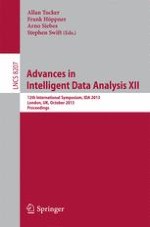2013 | Book
Advances in Intelligent Data Analysis XII
12th International Symposium, IDA 2013, London, UK, October 17-19, 2013. Proceedings
Editors: Allan Tucker, Frank Höppner, Arno Siebes, Stephen Swift
Publisher: Springer Berlin Heidelberg
Book Series : Lecture Notes in Computer Science
